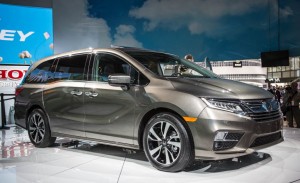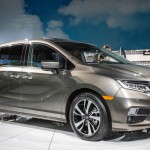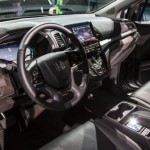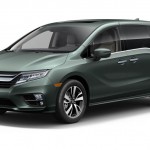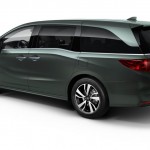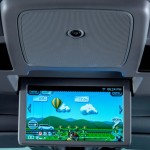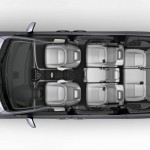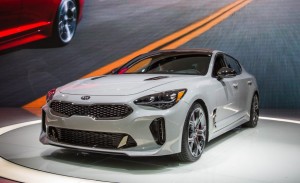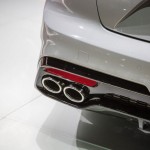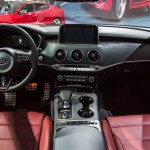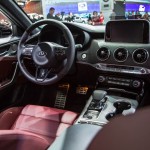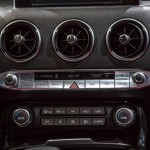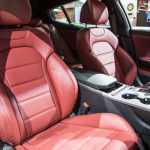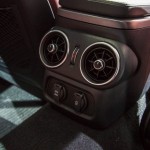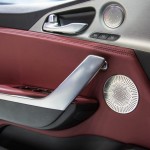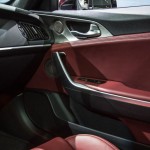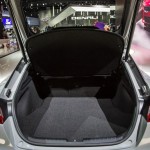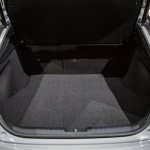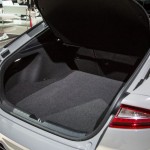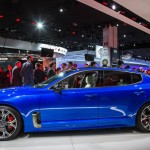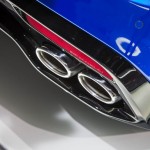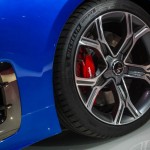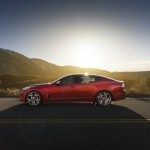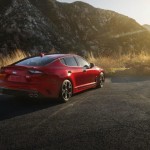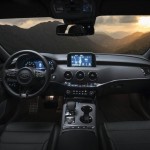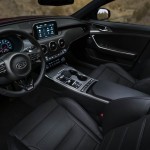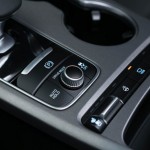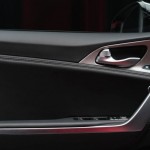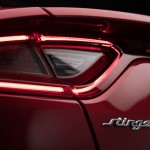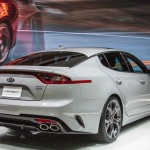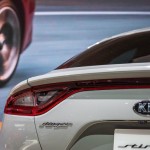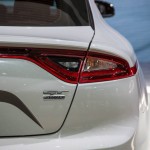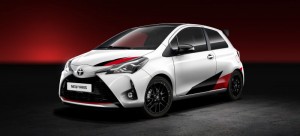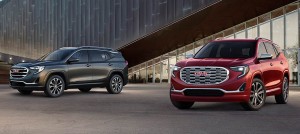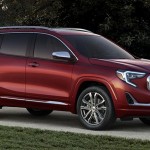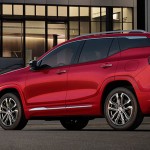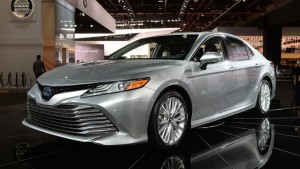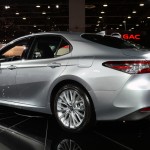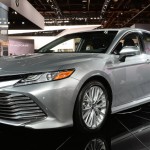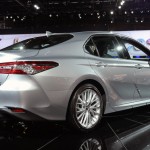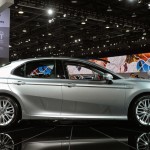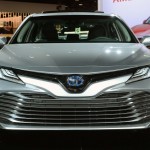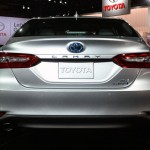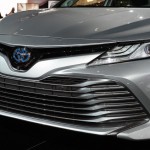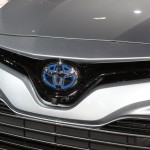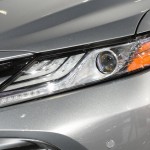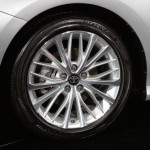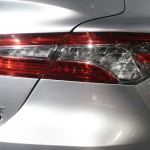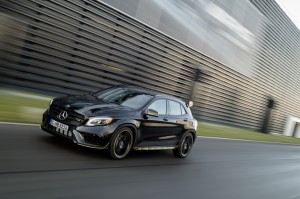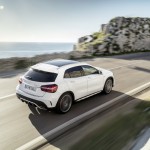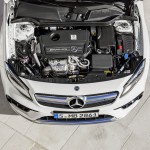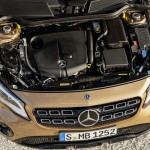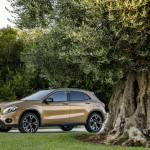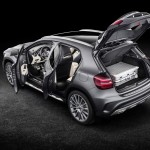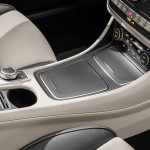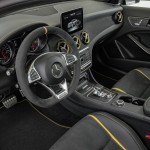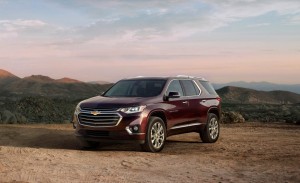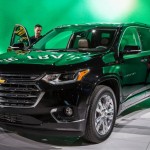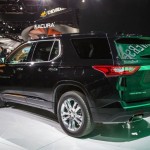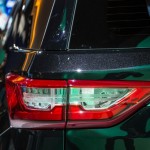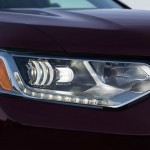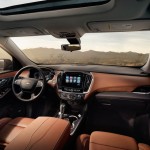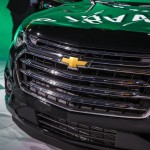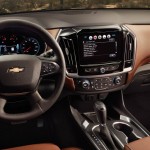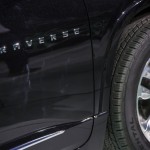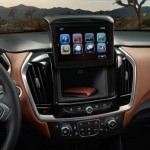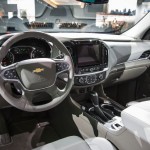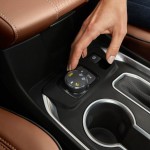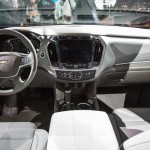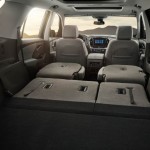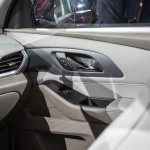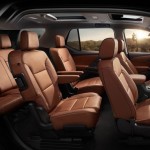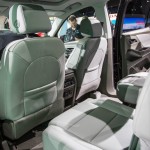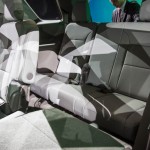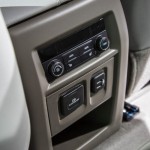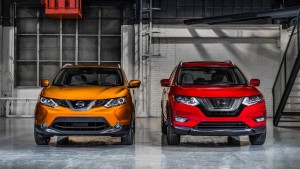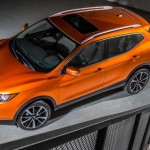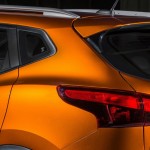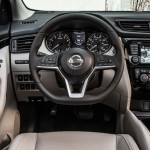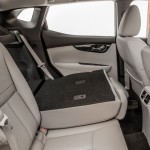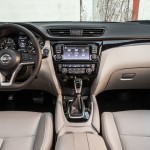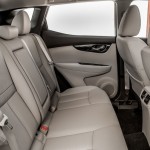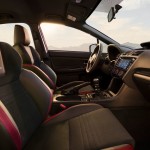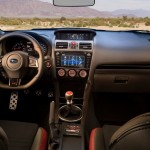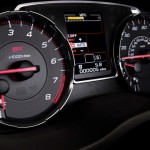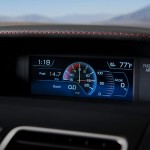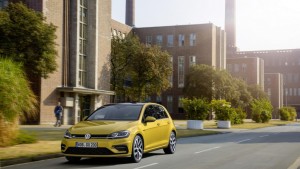Monthly Archives: January 2017
3 Reasons Why The 2018 Honda Odyssey Remains To Be A Family-Friendly Minivan
The trend all over the world now is for families to choose three-row crossovers instead of the minivans. Fortunately, in the United States, at least, there is still a huge market for the likes of the Honda Odyssey.
Introduced during the 2017 Detroit Auto Show, the new 2018 Honda Odyssey promises versatility, functionality, and most of all, space. A huge chunk of space. On the outside, the Odyssey seemed to have not changed at all from its predecessor. The only changes are the embellished beltline, a hockey-stick character line, new LED headlights and taillights, and a grille similar to the one on the Pilot.
However, here are the real gems in the new Honda Odyssey based on a source:
1. Magic Slide Seats
The previous models for the Odyssey has a removable center section for the second row. That means it can either seat three or be separated for two. Honda made this even more incredible now. The whole row can be moved forward to allow easier access to the third row. This also means that the ones on the first row can reach back easier to the people in the middle row.
The center can still be removed, so the outboard seats can slide to the center together. Either of the outboard can move to the center, depending on whether the third row wants a more spacious left or right. It can also be moved in a side-to-side positioning in increments.
2. Cabin Watch
The cabin is filled with technologies that allow for better communicating between those in the front seats and those in the rear seats. The most interesting out of which is the Cabin Watch, an infrared camera that works in darkness or daylight. It allows people in the front seats to see what’s going on in the last two rows. The images on the camera will be sent to the dashboard’s central display screen. Pinch and zoom is allowed.
3. Honda Sensing
The safety features are another element that should factor into why families are choosing Odyssey. The Honda Sensing packs a suite of active safety features that are standard on all models, except for the base LX.
The package includes adaptive cruise control with automated emergency braking, lane-keeping assist, road-departure mitigation, and rear cross-traffic alert.
3 Things You Need To Know About The 2018 Kia Stinger
During the 2017 Detroit Auto Show, Kia unveiled its 2018 Stinger. Not to be mistaken for the K900, the Stinger is much sleeker and sportier. There are no pricing details for the Stinger, but we’ll expect more details in the coming weeks.
Here are the three things we know about the auto so far based from a report:
1. It Is Getting Two Gasoline Options
In the United States, there are two gasoline options. In Europe, a diesel option may be made available. The decision to bring a diesel option to Europe is purely market based. Sorry, American buyers, the diesel option is not going to be brought to your shores.
The range-topping model is going to be the 3.3-liter V-6 engine that produces 365 horsepower, though there is also the entry-level engine—a 2.0-liter four-cylinder engine that churns out 255 horsepower. Standard to both models is the eight-speed automatic transmission. Buyers will be able to choose between an all-wheel and a rear-wheel drive.
2. The Design Is Aggressive
The Stinger is not prototype Kia. At first glance, it might even look like an Alfa Romeo. The “tiger nose” grille was not the one that separates the Stinger from other sedans in the market. It’s that low stance and muscular proportions that effectively distinguishes this model from anything that Kia made before.
With 190.2 inches of length, it is 4.1 inches longer than one of its competitors, the Audi A4, and it is 5.7 inches longer than the Mercedes Benz C-Class. It also has an 114.4-inch wheelbase, which is longer than any of its competitors.
3. Generous Equipment Should Be Expected
The cabin is home to a number of technologies available in the South Korean market. It has a wireless device charging station, navigation, and 7.0-inch touchscreen. Safety features for the drivers include adaptive cruise control, automated emergency braking, and a head-up display. For music lovers out there, you can opt for the Harman/Kardon audio system that has 15 speakers and subwoofers beneath the front seat.
3 Major Expectations With The High Performance Toyota Yaris
When it comes to the Toyota Yaris, not many people give it attention these days. It is, after all, merely a car, something that gets you from Point A to Point B. Nothing more, nothing less. But that’s about to change as Toyota previewed a high performance (unnamed) Yaris that will soon be available for the European market.
There is not much information available for this new Yaris. It doesn’t even have a name at this point. What we do know is that it’s going to produce more than the 106 horsepower the current generation can.
Powertrain
At 2,400 pounds for the hatchback, the redesigned Yaris can apparently produce 207 horsepower based on a report. That’s a pretty good pull for such a heavy hatchback, but we’ll see more of that once the car got tested on the road.
Based on these specifications, we’re guessing that the power will come from a turbocharged four-cylinder engine. That would only be the only possible reason that the subcompact can pull off a 207 horsepower.
According to Toyota, the car also has an upgraded chassis that will improve the handling. We are not sure yet what it means this time, though.
Exterior
The new Yaris fits the European market nicely. It looks sportier than the current model and it has that edge that almost makes it look like a (lesser) Mini Cooper, in a way.
The redesigned Yaris is based on the two-door version of the hatch. It will now come with sharp-looking wheels, a rear spoiler, and graphics in red and black. There are also revisions at the front and rear styling.
Competition
It’s not yet clear of this Yaris will be brought to the United States. If it does, it will compete directly with the Ford Fiesta ST, the Mini Cooper S, and the Fiat 500 Abarth.
What To Get Excited About In The Redesigned 2018 GMC Terrain
After circling each other for some time, the GMC Terrain and Chevrolet Equinox are finally going head-to-head because they are both being redesigned for 2018. GMC said its Terrain is now smaller and lighter than its predecessor, making it an ideal fit in the compact crossover and SUVs segment.
Since there are no test drives yet of the Terrain, it will be hard to determine how this less size and weight affected the handling and aerodynamics. If GMC is right, this may finally be the year that they beat the Equinox in its own game.
Smaller And Lighter
The lightest version of the 2018 Terrain is said to have this little fact: it is 465 pounds lighter than the lightest version of the current Terrain. To do this, GMC had to remove the physical heft, so the smoother roof on the redesigned model has the “lightness” and “grace” than the chunkier current generation.
The dimensions of this redesigned Terrain are these: 3.2 inches shorter in length, 0.4 inch narrower, and 0.9 inch lower than the Terrain that it’s going to replace. Curiously, the wheelbase is smaller by 5.2 inches, but the interior is more spacious than before. The rear legroom has 0.2 inch more and the front-seat legroom has 0.3 inch more.
Speed Is The Name
The base Terrain will come packing a turbocharged 1.5-liter four that produces 170 horsepower and 203 lb-ft of torque. The step-up engines are the turbocharged 2.0-liter four that cranks out 252 horsepower and 260 lb-ft of torque, and the 1.6-liter four-cylinder diesel that comes up with 137 horsepower and 240 lb-ft of torque.
A Denali Trim Is Available
The 2018 Terrain comes in four trims—SL, SLE, SLT, and the range-topping Delani trims. All variants come with the standard LED daytime running lamps, LED taillights, HID headlights, active interior noise cancellation, aluminum cabin pieces, and soft-touch materials on the dashboard and door panels.
The Denali trim will add these: chrome accents, Bose audio system, a satin-chrome grille, a power liftgate, 19-inch aluminum wheels, navigation, LED headlights, heated steering wheel, and piping on the front seats.
5 Things We Noticed About The 2018 Toyota Camry Introduced In Detroit
The 2017 Detroit Auto Show is where Toyota finally unveiled its redesigned 2018 Camry. Being the only sedan that maintained huge sales in the American market, the Toyota Camry has always been impressive.
Now that it has been redesigned for innovativeness and style, we can only imagine how the Camry will once again come on top of sedan sales.
1. Dimensions
Curiously enough, Toyota made the Camry 0.7 inch wider with the wheelbase two inches longer, and the roof and hood height lowered by one and 1.6 inches, respectively. The front and rear hip points have also been lowered, giving the new Camry a sportier look than its predecessor. Inside, even the dashboard has been lowered significantly to maintain visibility.
2. Driving Dynamics
To provide better driving experience, the new Camry has been bolstered, something that the Japanese automaker already did for the model during its mid-cycle refresh back in 2015. There’s a new double-wishbone suspension and four-point engine that reduce noise, vibration, and harshness.
Toyota swore that drivers will notice the improved dynamics the moment they sit on the driver’s seat.
3. Powertrains
The vast majority in the lineup will get the 2.5-liter naturally aspirated four-cylinder “Dynamic Force Engine.” Compared to the current model with a 2.5-liter engine as well that produces 178 horsepower and 170 pound-feet of torque, the new Camry is slated to be more powerful. It will also be competitive in terms of fuel economy.
There are two other powertrains: the 3.5-liter V-6 to be shared with the Highlander and Sienna and the Hybrid. Options for the V-6 include a four- or six-cylinder paired with a new eight-speed automatic transmission.
The Camry Hybrid has the new 2.5-liter four-cylinder engine with a revised CVT that features a new Sport mode with simulated six gears.
4. Interior
The new Camry has these features: 7-inch gauge display, a 10-inch Head-Up Display, and a center stack controls with the latest Entune 3.0 touchscreen.
5. Pricing
There are no pricing details yet, but let’s wait and see if we’ll get something out of its introduction at the 2017 Detroit Auto Show. The new Toyota Camry is expected to start its deliverables in late summer 2017.
Photos
Check out the photos of the new Camry in the gallery below:
4 Things You Must Know About The 2018 Mercedes-Benz GLA
The Mercedes-Benz GLA just went under the knife for a few facelifts and additional features. But in order to see what actually changed, you will have to squint your eyes. Yes, they are that minuscule.
1. New GLA-Class Has Two Models
The 2018 GLA from Mercedes has two new models: the base GLA250 and the AMG GLA45. The base model produces 208 horsepower from its I4, seven-speed dual-clutch transmission, standard front-wheel drive, and optional all-wheel drive.
The AMG GLA45, on the other hand, has a turbocharged four-cylinder engine that produces 375 horsepower. Standard to the AMG version is an all-wheel drive system.
2. Visual Changes Are Minimal
Here are what you can expect from the car’s exterior changes: newly designed front and rear bumpers, new wheel designs, and LED headlights optional on the GLA250 but standard on the AMG GLA45. European models will get taillights that dim depending on the time of the night. Issues with LED lights are usually on how it hurts the eye when point directly.
3. Interior Updates Are Also Minor
When you sit inside the cabin of the new Mercedes-Benz GLA-Class, you’ll notice how it changed so minimal you can almost not see the updates. The seat covers are new on the GLA250. There’s chrome around the control panels, center console, and seat adjustment switches. The new set of gauges has red needles while the air conditioning vents have more noticeable accents around them.
4. Difference Between The GLA250 And GLA45
Since the AMG GLA45 is expected to be priced higher, it’s safe to say that it has a more aggressive styling than the GLA250. The AMG GLA 45 has a rear spoiler lip, larger wheels, and a more aggressive front end. Standard to the GLA45 are sport seats with red contrast stitching. There’s plenty of AMG badging in the cabin while the whole dashboard is covered in premium leatherette.
Top 3 Features of the 2018 Chevrolet Traverse
If there is any automaker that understands Americans’ need for big cars, it’s General Motors. From their full-size Chevrolet to GMC to Cadillac SUVs, GM made a name for themselves in the truck and crossover segment.
1. Bigger Than Its Predecessor
We’re in the second generation of the Chevrolet Traverse, and it’s safe to say this new one won’t disappoint basing from sources. In fact, it mightily impresses. It has a wheelbase that is two inches longer than its predecessor, and is a full eight inches longer than the Acadia. This means that passengers will get to enjoy a roomier cabin—more headroom and legroom for the second- and third-row seats. That’s pretty impressive because the outgoing Traverse is already roomier than any of its contemporaries.
2. Cargo Area Is Smaller Than The Current Generation Chevrolet Traverse
Unfortunately, the cargo area couldn’t be bigger enough. It is smaller in dimensions. As to why, GM has yet to give out details on that. Don’t fret, though, because the next-generation Traverse’ 23 cubic feet space behind its third-row seating still beats that of its competitions: the Honda Pilot (16 cubic feet) and the Ford Explorer (21 cubic feet).
If you want more cargo space, you can opt not to have passengers and simply fold the second- and third-row seats. That will give you a total space of 99 cubic feet, down from 116 cubic feet on the current generation Traverse. Still, that’s a pretty impressive space compared to Volkswagen Atlas’ 97 cubic feet.
3. Seven- And Eight-Passenger Configurations Offered
You have options with the 2018 Traverse: either a seven-passenger seat or an eight-passenger seat configuration. The lower trim levels have three-seat benches for the second and third rows while the higher end versions sport two captain’s chairs in the middle row. You’ll be excited over the quick-release second-row seat that makes accessing the third row easier.
3 Important Features Of The 2017 Nissan Rogue Sport
Nissan finally decided to bring its Qashqai to the American market, though it’s now under the name of Rogue Sport. It has been introduced to the American audience during the 2017 North American International Auto Show, and is slated to fit in between the Juke and the regular Rogue.
If you are familiar with the Qashqai, the Rogue Sport is no different from that based on a source. It has the same features and exterior design. The Rogue Sport nameplate is only available in the United States. In Canada, it will still be called Qashqai.
1. Smaller Than The Regular Rogue
In terms of design, we can expect the Rogue Sport to be very similar and close to the European Qashqai. That means it will be smaller than the regular Rogue to appeal to urban dwellers, who are usually stuck in heavy traffic and small roads and parking spaces.
Even the interior bears resemblance to the Qashqai. It has a three-spoke steering wheel, Nissan’s touchscreen infotainment system, and loads of equipment from the regular Roque.
2. Rogue Sport S Comes With Standard Features
The entry-level Rogue Sport S has the standard LED running and taillights, 16-inch wheels, backup camera, Bluetooth, and satellite radio.
3. Rogue Sport SL And SLE Get More
If you want a better-looking Rogue Sport, you can check out the SL trim level. It has 17-inch wheels, push-button start, roof rails, dual-zone auto climate control, a power driver’s seat, and a six-speaker sound system.
As for the flagship SLE, it gets 19-inch wheels, a 360-degree SurroundView camera system and navigation, remote start, fog lights, heated mirrors, leather seats, and a heated steering wheel.
It comes with a CVT system with eco-mode, and buyers can choose between a front- and all-wheel drive. For now, only one engine is available: a 2.0-liter naturally aspirated inline-four that produces 141 horsepower and 147 pound-feet of torque.
4 Things To Take Note Of In The 2017 Volkswagen Golf R-Line
By the end of 2016, we saw the Volkswagen Golf get its much-needed mid-life cycle facelift. All models under the Golf line got upgraded, both in the exterior and a bit of its interior. What we’re surprised is that Volkswagen did not seem interested to promote the R-line of its Golf model.
Apparently, you can now get the VW Golf with the R-line package, which is a bit like getting the GTI/R (because of the sportiness of the package) minus the upgrade on the powertrains. Here are three things you need to take note of with the VW Golf R-line based on a source:
1. Exterior
The R-line package can be applied both on the hatchback and the wagon segments. This caters to the needs of drivers who want all the sportiness and the design of the higher-end models, without necessarily the upgrades in the engine and power.
The R-line package brings to the table the following upgrades on the exterior: redesigned front and back bumpers, sill extensions in glossy black, and new rear spoiler with aero flaps. There is also the option to have a diffuser at the back with the trapezoidal exhaust tips with chrome finish.
2. Interior
Inside, you can find that the compact has a slew of changes such as stainless steel door sill panels, foot rest, pedal caps, sport seats, and black roofline. You also have the option to have leather seats instead of the sport seats. Then, there are also what they call the “decorative inlays,” which basically means these: floor mats, contrast stitching for the gear shifter, and a sportier steering wheel with the R-line badge,
3. Pricing
The R-line package is fully customizable, pricing wise. Owners can just choose to have the exterior treatment, which is priced at €1,295 or €1,105 in Germany for the Comfortline and Highline models, respectively.
If you want the full package, you can get it for €2,295 for the entry-level specs and €1,800 for the Highline.
4. Photos
Check out the imgages of the 2017 Volkswagen Golf with the R-Line package in the gallery below:

